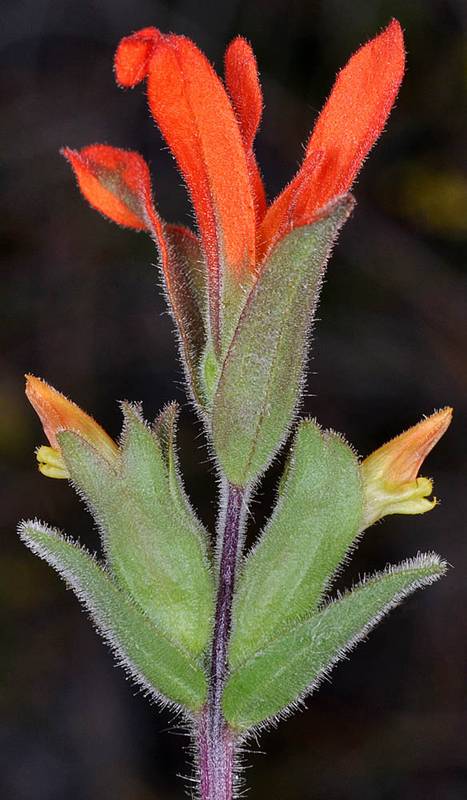Castilleja angustifolia
Castilleja minor
annual paintbrush
Leaves alternate, linear-lanceolate, entire, glandular-pubescent.
Inflorescence becoming greatly elongate, the flowers well-spaced;
bracts lanceolate, entire, glandular, much longer than the flowers, the upper third of the upper ones scarlet;
calyx 15-20 mm. long, deeply cleft above and below, its primary lobes again divided into acute, linear segments;
corolla yellowish, not much longer than the calyx, the upper lip short and blunt and the lower lip inconspicuous;
stamens 4.
Capsule.
Castilleja angustifolia
Castilleja minor
Central Washington and eastern Oregon to southern Montana, south to Arizona.
- Local floras:
BC,
CA,
OR,
WA
- Local Web sites:
CalFlora,
CalPhotos,
Flora NW,
PNW Herbaria
WildflowerSearch
iNaturalist (observations)
USDA Plants Database
- LBJ Wildflower Center
- SEINet
- Plants of the World Online
- Encyclopedia of Life
- Wikipedia
- Google Image Search



